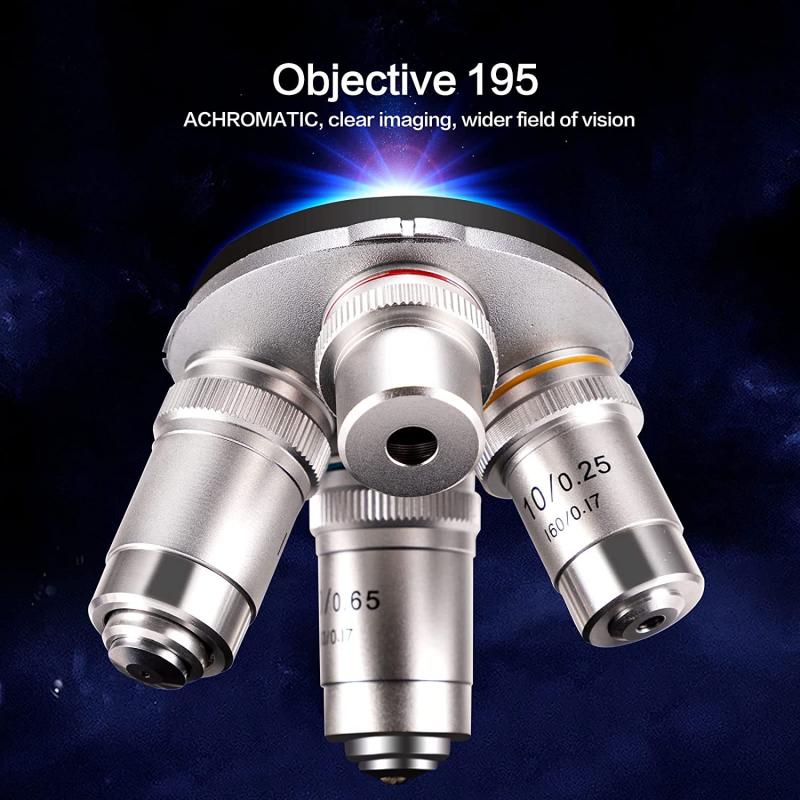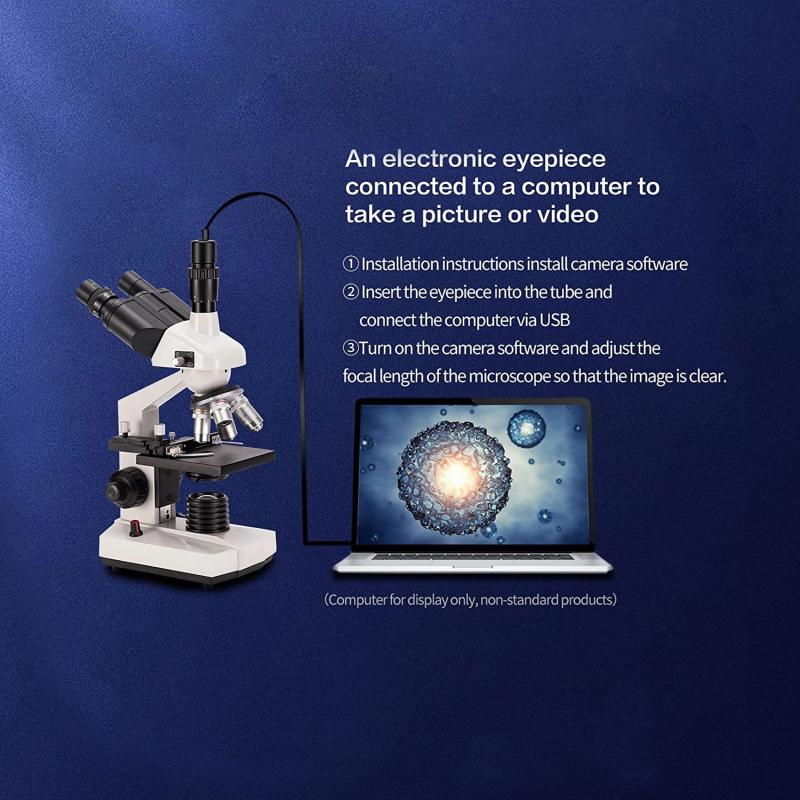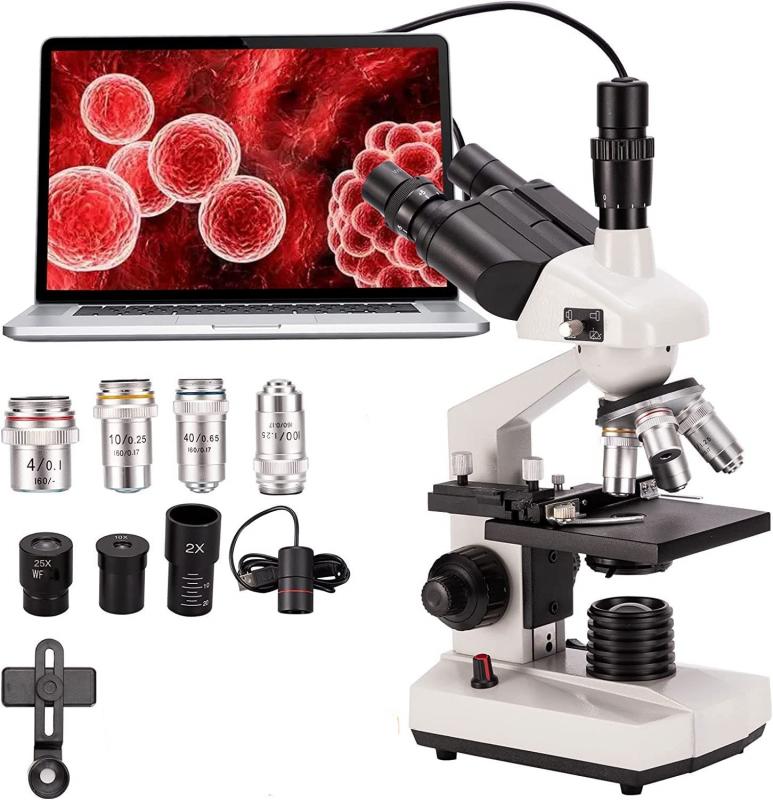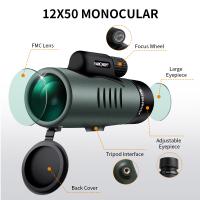What Is The Size Of An Electron Microscope ?
The size of an electron microscope can vary depending on the specific model and design. Generally, electron microscopes are larger and more complex than optical microscopes due to the need for specialized components to generate and manipulate electron beams. They typically consist of a main body or column that houses the electron source, electron lenses, and detectors. The overall size can range from a few meters in length for transmission electron microscopes (TEM) to several meters in height for scanning electron microscopes (SEM). Additionally, electron microscopes often require ancillary equipment such as vacuum systems, sample preparation chambers, and computer control units, which can further contribute to their overall size.
1、 Magnification capabilities of an electron microscope
The size of an electron microscope can vary depending on the specific model and type. Generally, electron microscopes are larger than optical microscopes due to the complex technology involved. The size can range from a few meters in length for transmission electron microscopes (TEM) to a few centimeters for scanning electron microscopes (SEM).
Transmission electron microscopes are typically larger in size as they require a vacuum chamber to operate. They consist of a long column that houses the electron gun, electromagnetic lenses, and the specimen chamber. The size of the TEM is determined by the length of the column, which can be several meters long. On the other hand, scanning electron microscopes are relatively smaller as they do not require a vacuum chamber. They consist of a compact column that houses the electron gun, electromagnetic lenses, and the scanning system.
In terms of magnification capabilities, electron microscopes far surpass the capabilities of optical microscopes. Electron microscopes can achieve magnifications ranging from a few hundred times to several million times. The magnification power of an electron microscope is determined by the strength of the electromagnetic lenses and the energy of the electron beam. With the latest advancements in electron microscopy, modern instruments can achieve atomic-scale resolution, allowing scientists to observe the fine details of materials and biological specimens at the atomic level.
It is important to note that the size and magnification capabilities of electron microscopes continue to evolve with advancements in technology. Researchers and manufacturers are constantly working on improving the performance and compactness of electron microscopes, making them more accessible and versatile for various scientific applications.

2、 Resolution and imaging capabilities of an electron microscope
The size of an electron microscope can vary depending on the specific model and type. Generally, electron microscopes are larger than optical microscopes due to the complex technology involved in generating and manipulating electron beams. The size can range from a few meters in length for transmission electron microscopes (TEMs) to smaller, more compact designs for scanning electron microscopes (SEMs).
TEMs are typically larger in size as they require a long column to generate and focus a high-energy electron beam. They consist of a vacuum chamber, electron gun, electromagnetic lenses, and a fluorescent screen or digital detector to capture the image. The size of a TEM can be several meters long, with the column taking up a significant portion of the space.
On the other hand, SEMs are generally more compact and can fit on a laboratory benchtop. They use a focused electron beam to scan the surface of a sample and generate high-resolution images. SEMs consist of a vacuum chamber, electron gun, electromagnetic lenses, and a detector to capture the secondary electrons emitted from the sample. The size of an SEM can range from a few feet to a meter in length.
In terms of resolution and imaging capabilities, electron microscopes offer much higher resolution compared to optical microscopes. TEMs can achieve resolutions down to the atomic level, allowing for the visualization of individual atoms and their arrangement in a sample. SEMs can provide sub-nanometer resolution, enabling detailed imaging of surface structures and topography.
The latest advancements in electron microscopy technology have further improved the resolution and imaging capabilities. Techniques such as aberration correction and advanced detectors have enhanced the clarity and detail of images obtained from electron microscopes. Additionally, the development of cryo-electron microscopy (cryo-EM) has revolutionized the field by enabling the imaging of biological samples in their native, hydrated state at high resolution.
Overall, electron microscopes offer unparalleled resolution and imaging capabilities, allowing scientists to explore the nanoscale world with great precision. The size of an electron microscope can vary, but advancements in technology continue to push the boundaries of what is possible in terms of resolution and imaging quality.

3、 Electron beam generation and control in an electron microscope
The size of an electron microscope can vary depending on the specific type and model. Generally, electron microscopes are large and complex instruments that require a dedicated laboratory space. The size of the microscope is determined by various components and subsystems involved in electron beam generation and control.
In an electron microscope, the electron beam is generated by an electron gun, which typically consists of a heated filament or a field emission source. The size of the electron gun can vary, but it is usually relatively small compared to the overall size of the microscope.
The electron beam is then controlled and focused using electromagnetic lenses. These lenses are typically larger in size and are positioned along the optical column of the microscope. The size of the lenses can vary depending on the desired resolution and magnification capabilities of the microscope.
Additionally, electron microscopes also require a vacuum system to maintain a high vacuum environment, which is necessary for the proper functioning of the electron beam. The vacuum system includes various components such as pumps, chambers, and valves, which can contribute to the overall size of the microscope.
In recent years, there have been advancements in electron microscope technology, leading to the development of smaller and more compact models. These advancements have been driven by the need for portable and field-emission electron microscopes for various applications, such as materials science, nanotechnology, and biological research. However, it is important to note that even with these advancements, electron microscopes still require a significant amount of space and infrastructure to operate effectively.
In conclusion, the size of an electron microscope can vary depending on the specific model and type. While there have been advancements in miniaturizing electron microscopes, they still require a dedicated laboratory space due to the complex nature of electron beam generation and control.

4、 Sample preparation and handling in electron microscopy
The size of an electron microscope can vary depending on the specific model and type. Generally, electron microscopes are large and complex instruments that require a dedicated space for installation and operation. The size of the microscope is determined by several factors, including the type of electron microscope (such as transmission electron microscope or scanning electron microscope), the resolution required, and the specific features and capabilities of the instrument.
Transmission electron microscopes (TEMs) are typically larger than scanning electron microscopes (SEMs) due to their more complex design and higher resolution capabilities. A typical TEM can have a size ranging from several meters in length to a few meters in height. These microscopes consist of a column that houses the electron source, electromagnetic lenses, and detectors, as well as a sample chamber and a control console.
On the other hand, SEMs are generally smaller in size compared to TEMs. They typically have a size ranging from a few meters in length to a meter or so in height. SEMs also consist of a column with electron optics, detectors, and a control console, but they have a different sample chamber design that allows for the scanning of the electron beam across the sample surface.
In recent years, there have been advancements in electron microscope technology that have led to the development of more compact and portable models. These smaller electron microscopes are designed for specific applications, such as in-field or on-site analysis. They are more portable and easier to handle, making them suitable for various research and industrial settings.
In conclusion, the size of an electron microscope can vary depending on the type and model. Traditional TEMs are generally larger than SEMs, but there are also smaller and more portable electron microscopes available for specific applications. The latest advancements in electron microscope technology have led to the development of more compact and portable models, expanding the range of possibilities for sample preparation and handling in electron microscopy.
































There are no comments for this blog.